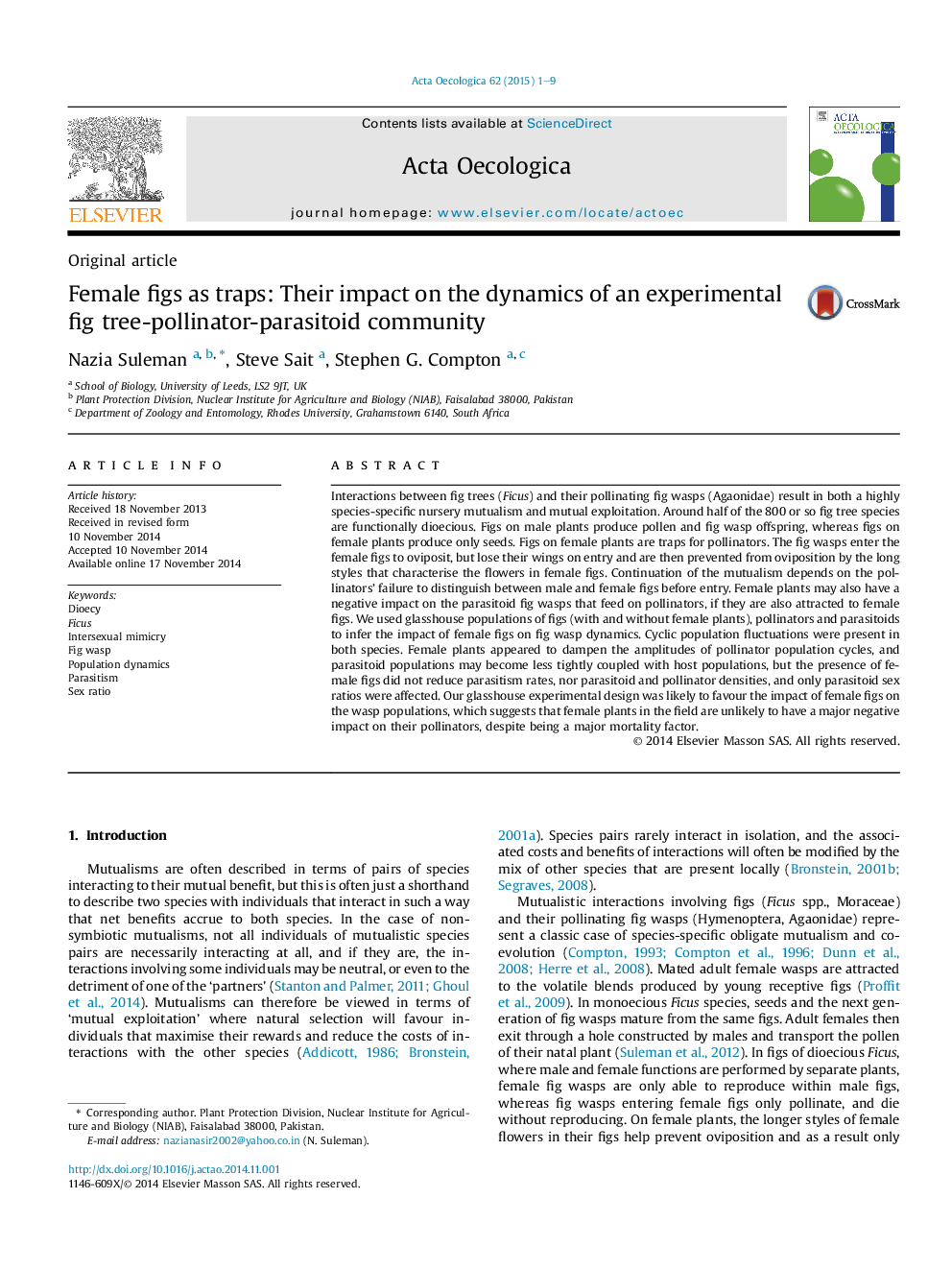| Article ID | Journal | Published Year | Pages | File Type |
|---|---|---|---|---|
| 4380719 | Acta Oecologica | 2015 | 9 Pages |
•Female figs trap fig wasp pollinators and do not allow them to reproduce.•We created experimental male-only and mixed fig tree populations.•Female plants modified cyclic population fluctuations in pollinators and parasitoids.•Pollinator and parasitoid densities were unaffected.•Female plants may have only marginal effects on pollinator population dynamics.
Interactions between fig trees (Ficus) and their pollinating fig wasps (Agaonidae) result in both a highly species-specific nursery mutualism and mutual exploitation. Around half of the 800 or so fig tree species are functionally dioecious. Figs on male plants produce pollen and fig wasp offspring, whereas figs on female plants produce only seeds. Figs on female plants are traps for pollinators. The fig wasps enter the female figs to oviposit, but lose their wings on entry and are then prevented from oviposition by the long styles that characterise the flowers in female figs. Continuation of the mutualism depends on the pollinators’ failure to distinguish between male and female figs before entry. Female plants may also have a negative impact on the parasitoid fig wasps that feed on pollinators, if they are also attracted to female figs. We used glasshouse populations of figs (with and without female plants), pollinators and parasitoids to infer the impact of female figs on fig wasp dynamics. Cyclic population fluctuations were present in both species. Female plants appeared to dampen the amplitudes of pollinator population cycles, and parasitoid populations may become less tightly coupled with host populations, but the presence of female figs did not reduce parasitism rates, nor parasitoid and pollinator densities, and only parasitoid sex ratios were affected. Our glasshouse experimental design was likely to favour the impact of female figs on the wasp populations, which suggests that female plants in the field are unlikely to have a major negative impact on their pollinators, despite being a major mortality factor.
